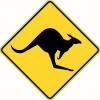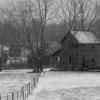For those of you, like me, that may be a bit frustrated getting a working burr on a card scraper, you may want to check out this burnisher. It was touted by CS, and I decided to put it on my Christmas list. It did arrive under the tree, and I just had an opportunity to give it a try. Put it to the test on three different card scrapers, and it produced the best and most consistent burr Iíve ever been able to achieve.
Maybe itís just mind over matter, or the cheap woodworking store burnisher I had been using, the Arno just made it a no brainer.
Iím not associated at all with Arno, just wanted to share my experience with it.





 Reply With Quote
Reply With Quote

Scraper_html_704204de.jpg)





